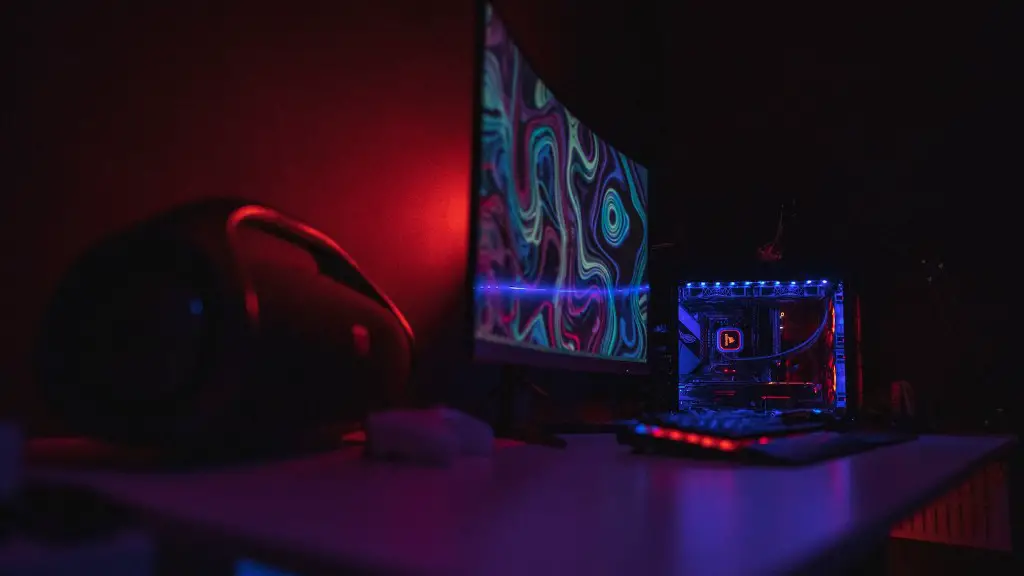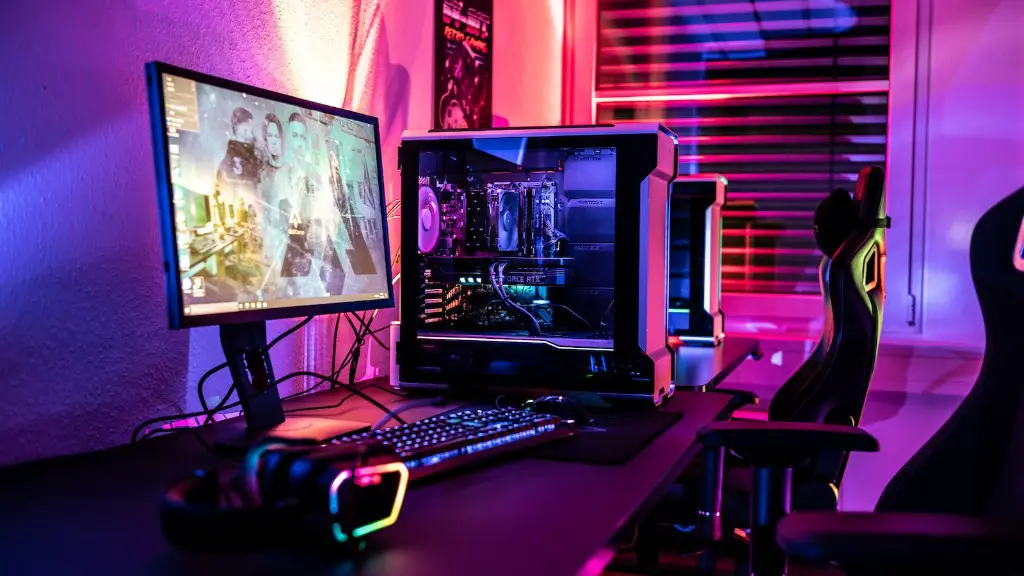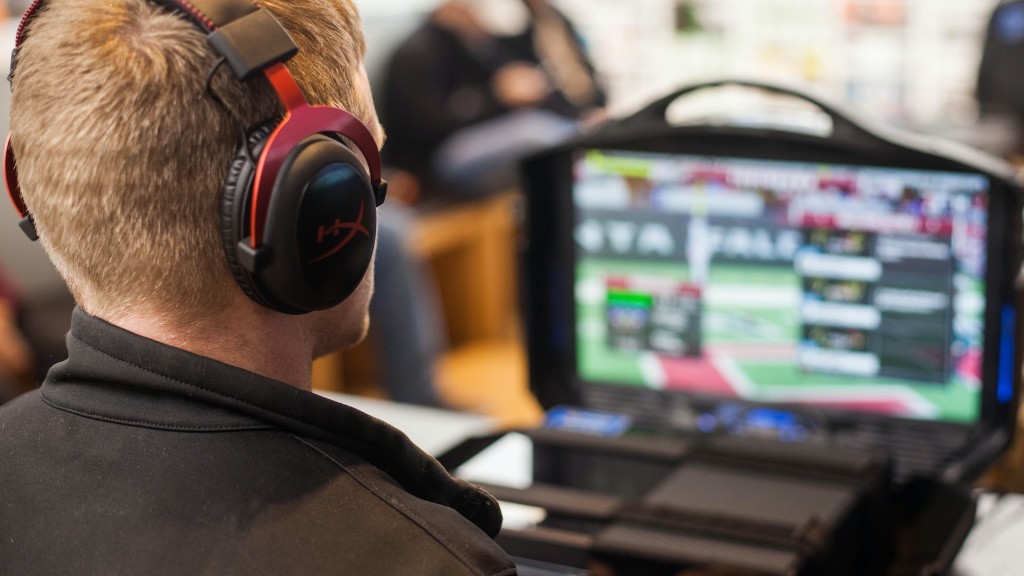When it comes to buying a gaming monitor for your gaming setup, there are a plethora of options to choose from. The important factor in your purchase is to find the best match of specs and performance with your needs and budget. An ideal gaming monitor should have good resolution, brightness, viewing angles and refresh rate. To help narrow down your selection, here are some key features to consider when searching for the right gaming monitor.
First and foremost, you should consider one of the most important features in a gaming monitor; its refresh rate. Most gaming monitors have a refresh rate of at least 60 Hz, but if you can afford to, you should try and get a monitor with a higher refresh rate of 144 Hz or more. This will make sure that the visuals you’re experiencing are smooth, lag free and highly responsive.
Next, you should look into the resolution of your monitor. Full HD (1920×1080) and Quad HD (2560×1440) are both popular resolutions for gaming monitors, and it’s important to decide which is best for you. Depending on your budget, you can get a 4K gaming monitor, but make sure that your graphics card is able to handle such a resolution.
The quality and contrast of your monitor are also very important. From LED and Twisted Nematic (TN) to In-Plane Switching (IPS), all of these panels come with different advantages and downsides. IPS monitors, for example, produce superior color reproduction to TN panels. However, they are more expensive and have shorter response time compared to TN panels.
Finally, you should pay attention to the ergonomics of the gaming monitor. The ability to adjust the height and tilt of the monitor is essential, especially if your gaming setup includes long gaming sessions. Additionally, look out for additional features like built-in speakers and USB ports, which could make your gaming experience more comfortable and enjoyable.
Panel Technology
When it comes to the panel technology of your gaming monitor, you have several options to choose from. Twisted Nematic (TN) and In-Plane Switching (IPS) displays are the two most popular types. TN is the older technology, but it can usually provide a faster response time and higher refresh rates than an IPS panel. On the other hand, IPS panels generally deliver better color accuracy and wider viewing angles. Ultimately, which type of panel technology you choose will depend on what kind of gaming experience you’re looking for.
When choosing a gaming monitor, it’s important to consider the panel type as it affects the monitor’s performance. TN panels feature lower color accuracy, but also faster response times. In contrast, IPS panels provide better color accuracy and wider viewing angles, although they’re not as quick in responsiveness. That being said, TN panels are usually more affordable than IPS panels, so that’s something to consider if you’re on a budget.
In addition to TN and IPS, there are also newer technologies like Vertical Alignment (VA) and Multi-Domain Vertical Alignment (MVA). VA panels offer better performance than TN panels, with better color accuracy and refresh rates. MVA panels are also good options, as they provide better viewing angles and contrast than TN and IPS monitors.
Finally, if you don’t want to worry about choosing between different panel types, you can always opt for an OLED gaming monitor. OLED displays offer excellent color accuracy and deep black levels, making them great for gaming. However, they’re also more expensive than other panel types, so they may not be ideal if you’re on a budget.
Aspect Ratio
When shopping for a new gaming monitor, it’s important to be aware of the aspect ratio of the monitor. An aspect ratio is simply the ratio of the width of the screen to its height. Monitors come in various aspect ratios, including 4:3, 16:9, 16:10 and 21:9. Depending on your needs, you may want to consider choosing a monitor with a specific aspect ratio.
For general use, a 16:9 aspect ratio is usually the best choice. This aspect ratio is the most common amongst computer monitors and is perfect for standard Full HD resolution. That being said, if you’re looking to get the most out of your gaming monitors, you should look into a monitor with a 21:9 aspect ratio. This will give you an extra wide field of view, making it ideal for virtual reality and professional gaming.
Another popular aspect ratio for gaming monitors is 16:10. This aspect ratio is great for productivity, especially if you work with multiple windows or apps at once. Of course, if you’re looking for the highest resolution possible, you can always go for a 4K monitor with 4:3 aspect ratio.
Whether you’re looking for a monitor with a specific aspect ratio or a certain resolution, make sure to do your research and find the right gaming monitor for your needs and budget. That way, you’ll have a monitor that can deliver the best gaming experience.
G-Sync and FreeSync Technology
Another important feature you should consider when shopping for a gaming monitor is G-Sync and FreeSync technology. Both G-Sync and FreeSync are technologies developed by Nvidia and AMD respectively that help synchronize the refresh rates between your graphics card and monitor. This synchronization helps minimize screen tearing and input lag, resulting in smoother gameplay.
Nvidia’s G-Sync monitors require a compatible Nvidia graphics card, whereas AMD’s FreeSync monitors can work with any graphics card, regardless of the manufacturer. With G-Sync, you can also experience low latency and reduced input lag, which can be very helpful in competitive gaming. Overall, both technologies can significantly improve the performance of your gaming monitor.
When it comes down to which of the two technologies to choose, it generally comes down to personal preference. G-Sync and FreeSync both have their advantages and disadvantages, so you have to decide which features you prioritize over the other. Ultimately, it’s up to you to decide which gaming monitor to buy.
Connectivity Options
When shopping for a gaming monitor, it’s also important to consider what ports and connections are available. Newer monitors tend to have multiple ports, such as HDMI, DisplayPort and USB-C. Some monitors will also have integrated speakers and USB ports, which can be very useful for connecting gaming peripherals.
If you’re looking for a monitor for console gaming, make sure to check if it has the requisite ports to connect your gaming console. You should also make sure that the ports are compatible with your gaming console, as older consoles may require an HDMI to VGA adapter. Ultimately, make sure to check the ports and connections available before you purchase a gaming monitor.
In conclusion, there are a few key features to consider when shopping for a new gaming monitor. Make sure to look at the refresh rate, resolution and panel type of the monitor, as well as the aspect ratio, G-Sync and FreeSync technologies and ports available. With all of these important factors in mind, you should be able to find an ideal gaming monitor for your needs and budget.



